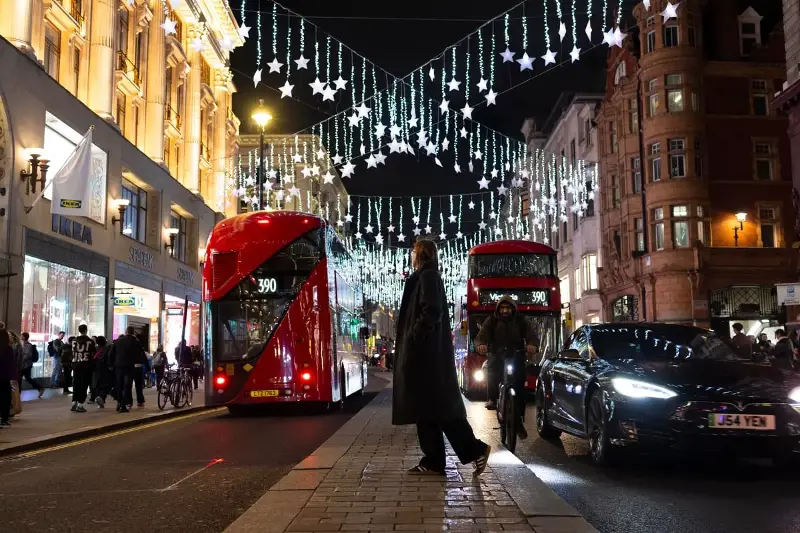
At a glance
• TfL plans to reroute or shorten 15 bus routes, with diversions running via Wigmore Street and several routes terminating at Marble Arch
• The proposals aim to create a traffic- and cyclist-free zone between Selfridges and Ikea
• But TfL admits some roads - including Regent St - will become more congested and noisier
Transport for London has revealed how it plans to resolve the biggest conundrum in pedestrianising Oxford Street – what to do with 15 bus routes.
The details have emerged as TfL launches a second public consultation on Mayor Sir Sadiq Khan’s vision to ban traffic - and cyclists - from the central section of the street, between Selfridges and Ikea.
TfL admits that some surrounding roads will become noisier and more congested, with up to 300 more vehicles on Regent Street in the morning rush hour.
Residents have warned the proposals will “create chaos, not a world-class boulevard”, and be “catastrophic for the surrounding neighbourhoods” of Marylebone, Mayfair, Fitzrovia and Soho.
Subject to the outcome of the eight-week consultation, Sir Sadiq hopes that work to redirect the buses will being in late summer next year, with changes to Oxford Street itself - to make it more desirable to pedestrians – following in due course.
A total of 15 bus routes currently use Oxford Street, including 10 that run along the section that will be pedestrianised, namely between Orchard Street and Great Portland Street.
A further five routes start or terminate at Oxford Circus and will have to be moved.
TfL’s main proposal is to re-route most of the buses that currently operate between Selfridges and Oxford Circus north of Oxford Street, meaning they will use Wigmore Street and Henrietta Place.
But it will also curtail a number of routes, which will start and terminate at Marble Arch rather than at Oxford Circus, Piccadilly Circus or Trafalgar Square.
The impact of redirecting hundreds of buses, both in terms of noise and potential knock-on congestion, is one of the biggest concerns of residents’ groups opposed to the changes.
Parts of Wigmore Street are predicted to suffer an increase of 100 vehicles in each direction during the rush hour.
Regent Street southbound is expected to have an increase of 200 to 300 vehicles in the morning peak and a 100 to 200 vehicles increase in the afternoon peak.
Routes 7, 94, 98, 139 and 390 currently run on Oxford Street during the day and routes N7, 94, N98, N113, N137, 139, N207 and 390 run at night.
TfL proposes that the 98, 139 and 390 and the N98 and N207 be diverted via Wigmore St.
The 7 and N7 would terminate at Marble Arch instead of Oxford Circus. The 94 would also terminate at Marble Arch instead of Piccadilly Circus.
The 22 would terminate at Hanover Square rather than Oxford Circus, as would the N22. The 73 would terminate at Great Portland Street rather than Oxford Circus, as would the N73.
The N113 would terminate at Marble Arch instead of Trafalgar Square. The N137 would terminate at Marble Arch instead of Oxford Circus. The N15 would be redirected to a bus stand at John Prince’s Street rather than Oxford Circus.
TfL says modelling suggests the re-routing via Wigmore Street will add “less than a minute” to most routes – but the 390 and the 98 will suffer the biggest delays.
The 98 towards Pound Lane in Willesden will take two to three minutes longer in the morning and three to to five minutes longer in the evening rush hour, while journeys towards Red Lion Square will increase by up to five minutes in the morning and three in the evening.
The changes will also mean bus passengers have to walk further to access Oxford Street - typically between 100m to 200m.
Taxis will also be banned from the pedestrianised section of the street. Cars are already banned from Oxford Street from 7am-7pm, Monday to Saturday.
The mayor and TfL say they will work with Westminster council to provide “high quality alternative routes” to Oxford Street for cyclists.
TfL has also promised a new contraflow cycle lane for southbound cyclists on Holles Street and Harewood Place.
The consultation runs until January 16.
Sir Sadiq said: “We need urgent action to give the nation’s high street a new lease of life and make it an attractive international destination once again.
“A reimagined Oxford Street can bring the world to London and showcase the best of London to the world, and I’m pleased that we’re now moving ahead with our exciting plans to regenerate this iconic area.”
But the Marylebone Association said Wigmore Street had been closed five times this year for roadworks and warned that “one gas leak or water leak could gridlock the West End”.
An association spokesman said: “This is not regeneration—it is vandalism. It takes a functioning street and breaks the neighbourhoods around it.
“The mayor is selling a fantasy while ignoring the real-world consequences for residents, workers, businesses and vulnerable Londoners.”
More details of the changes planned for the pedestrian section of Oxford Street, including wider pedestrian crossings, will be released later.
The bus proposals would not alter traffic on Regent Street. Traffic would still be able to cross Oxford Street at Duke Street, Harewood Place and Holles Street (northbound only), Regent Street, Davies Street and Stratford Place (both northbound and southbound), and Vere Street and New Bond Street (southbound only).
Meave Wall, executive director of retail at Selfridges, said: “We’re encouraged by the proposals to enhance Oxford Street’s public realm and attract more people to the area through pedestrianisation.”
Dee Corsi, chief executive of the New West End Company business improvement district, said: “We will engage closely with the mayor and TfL to ensure that the proposed traffic modelling outlined in the consultation reflects the ambitions and needs of local businesses.”
© The Standard Ltd
